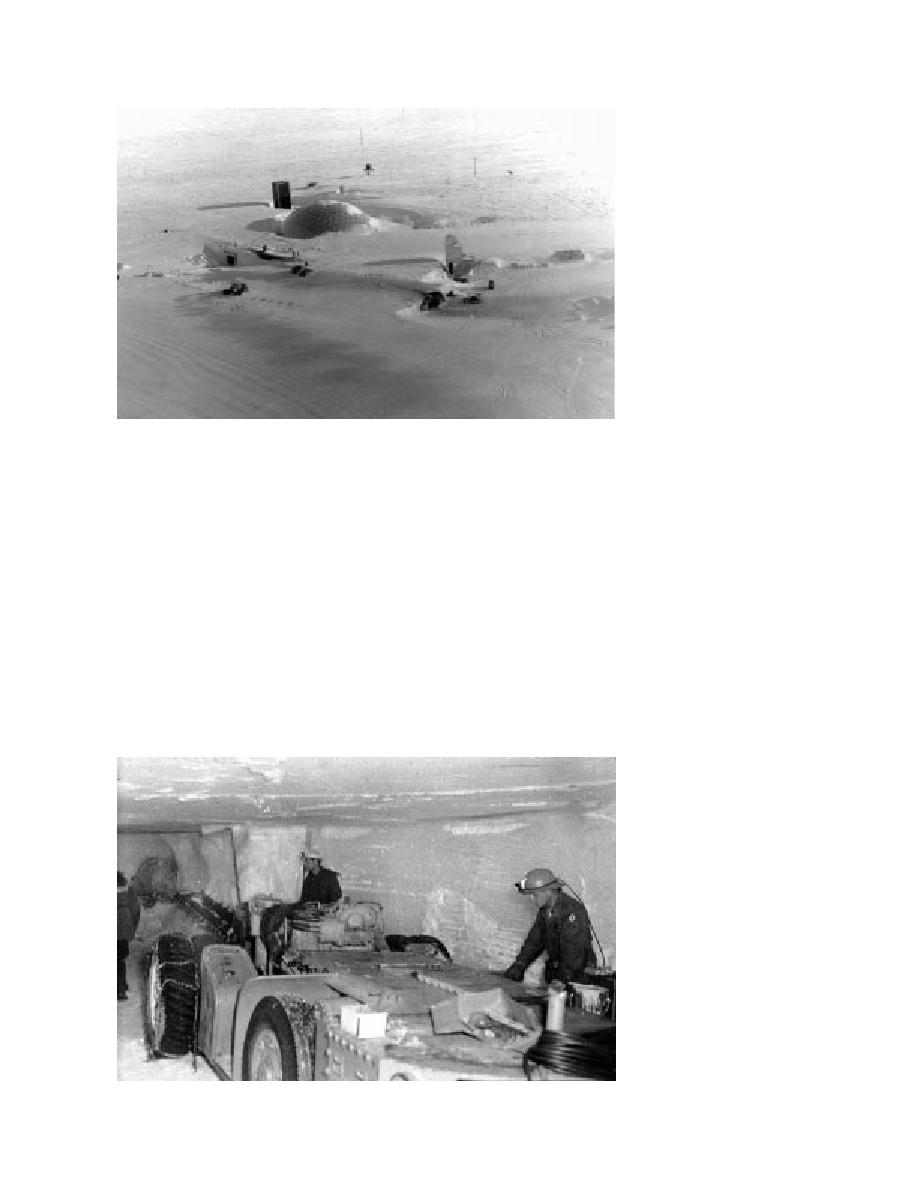
Figure 1. The Amundsen
Scott South Pole Station
(November 1997).
of steel arches (Fig. 3). The first type is a chordal
was labor intensive, despite the use of heavy ma-
arch, sometimes called a Granco Arch (Waterhouse
chinery.
1960). These large radius arches span the top of
Camp Century, built in 1960 by the U.S. Army
the trench and depend on the strength of the over-
and located about 150 km NE of Thule AFB, was a
lying sintered snow for structural strength. In
subsurface base constructed primarily of cut-and-
some cases, these arches were removed after the
cover tunnels (Clark 1965). Cut-and-cover tunnels
snow had hardened, resulting in a totally unlined
are constructed by machining a trench, usually
tunnel. The other type of arch used is called a Won-
with a large snow miller. After the trench is
der Arch (Clark 1965). These arches are approxi-
formed, corrugated metal arches are placed above
mately semicircular and form the top and sides of
the trench, and the remainder of the trench is back-
the "tunnel." In some cases, a trench is machined
filled using the snow miller. The metal arch sup-
ports the tunnel roof beneath the hardened ma-
before installation of the arch to add vertical clear-
chined and blown snow.
ance to the structure. Wonder Arches are designed
These types of tunnels are used for near-sur-
to be more permanent structures and, due to their
face applications and employ two general types
size, are not easily removed once buried. In most
Figure 2. Tunneling in
Greenland (1957).
2




 Previous Page
Previous Page
